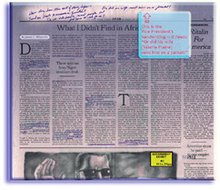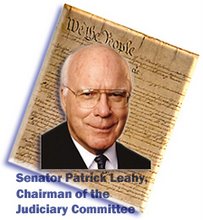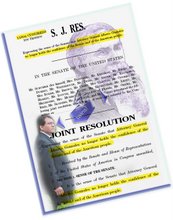rep. wexler makes vietnam "stick" to admin-spin on iraq quagmire. . .
the latest "nightly nolo"
serves up a bevy of vintage
vietnam war, and war memorial,
shots, all wrapped around about
two-and-a-half minutes of condensed
rep. robert wexler questioning.
take a look!
a good fact-checker, courtesy speaker pelosi's blog:
GENERAL PETRAEUS’ TESTIMONY:
"As a bottom line up front, the military objectives of the surge are, in large measure, being met." [Testimony, 9/10/07]
OBJECTIVE ASSESSMENT:
The President’s justification for the surge was that "reducing the violence in Baghdad will help make reconciliation possible." [White House, 1/10/07] But by all accounts, including that of General Petraeus, the Iraqi government’s political progress is stalled.
General David Petraeus, in letter to troops: "One of the justifications of the surge, after all, was that it would help create the space for Iraqi leaders to tackle the tough questions and agree on key pieces of national reconciliation legislation…It has not worked out as we had hoped." [Letter to Troops, 9/7/07]
Independent Jones Commission on the Security Forces of Iraq report: "At the end of the day…the future of Iraq and the prospects for establishing a professional, effective, and loyal military and police service, hinges on the ability of the Iraqi people and the government to begin the process of achieving national reconciliation and to ending sectarian violence. For the time being, all progress seems to flow from this most pressing requirement." [pg. 130]
Congressional Research Service (CRS) Report: The September 6th update of this report entitled "Post-Saddam Iraq Government and Security," the author describes the government as "collapsing." [pg. 22]
GENERAL PETRAEUS’ TESTIMONY:
"Coalition and Iraqi operations have helped reduce ethno-sectarian violence, as well, bringing down the number of ethno-sectarian deaths substantially in Baghdad and across Iraq since the height of the sectarian violence last December. The number of overall civilian deaths has also declined during this period…"
OBJECTIVE ASSESSMENT PART I:
Violence - particularly sectarian violence - is a constant and pervasive threat in Iraq.
Associated Press - The "death toll from sectarian attacks around the country is running nearly double the pace from a year ago." [AP, 8/25/07]
Washington Post — "Recent estimates by the media, outside groups and some government agencies have called the military’s findings into question. The Associated Press last week counted 1,809 civilian deaths in August, making it the highest monthly total this year…" [Washington Post, 9/6/07]
Independent Jones Commission on the Security Forces of Iraq report: "Iraqi society is being convulsed by sectarianism that if not swiftly and significantly curtailed could contribute to a rapid deterioration of Iraq…" [pg. 34]
National Intelligence Estimate: The "level of overall violence, including attacks on and casualties among civilians remains high" and "Iraq’s sectarian groups remain unreconciled." [pg. 1]
Government Accountability Office (GAO) Report: "[W]idespread violence across Iraq has seriously compromised the government’s ability to protect human rights. According to the United Nations, attacks against religious and ethnic minorities continued unabated in most areas of Iraq, prompting these communities to seek ways to leave the country. The conflicts reportedly bear the mark of sectarian polarization and "cleansing" in neighborhoods formerly comprised of different religions. According to a non-governmental organization, all of Iraq’s minority communities have suffered violations that include destruction and defacement of religious buildings; mass murder of congregations gathered in and around them; abduction, randsoming, and murder of religious and civic leaders and individuals including children…" [pg. 62]
OBJECTIVE ASSESSMENT PART II:
The U.S. military’s definition of "sectarian" violence is questionable.
According to an analysis of a Defense Intelligence Agency chart detailing violence in Baghdad by the Associated Press, "insurgent attacks against Iraqi civilians, their security forces and U.S. troops remain high" … "there were 897 attacks against Iraqi civilians in January and 808 in July. There were 946 attacks against Iraqi security forces in January and 850 in July." [Associated Press, 9/9/07]
Comptroller General David Walker, GAO: "Let’s just say that there are several different sources within the administration on violence, and those sources do not agree." [Washington Post, 9/6/07]
McClatchy News: "U.S. officials say the number of civilian casualties in the Iraqi capital is down 50 percent. But U.S. officials declined to provide specific numbers, and statistics gathered by McClatchy Newspapers don’t support the claim. The number of car bombings in July actually was 5 percent higher than the number recorded last December, according to the McClatchy statistics, and the number of civilians killed in explosions is about the same." [McClatchy Newspapers, 8/15/07]
The methodology used by the Pentagon to determine what is or is not included as "sectarian" violence is classified; however there are some indications of what is not included in the U.S. military’s violence data set:The more than 2,600 people killed by car bombs in Iraq are not counted as casualties of sectarian violence. [Los Angeles Times, 9/4/07]
Shiite-Shiite and Sunni-Sunni violence: "According to a spokesman for the Baghdad headquarters of the Multi-National Force-Iraq (MNF-I), those attacks are not included in the military’s statistics. ‘Given a lack of capability to accurately track Shiite-on-Shiite and Sunni-on-Sunni violence, except in certain instances…we do not track this data to any significant degree.’" [Washington Post, 9/6/07]
Violent attacks by Sunni tribesmen allied with the United States against al-Qaeda. [Washington Post, 9/6/07]
GENERAL PETRAEUS’ TESTIMONY:
"One reason for the decline in incidents is that Coalition and Iraqi forces have dealt significant blows to Al Qaeda-Iraq. Though Al Qaeda and its affiliates in Iraq remain dangerous, we have taken away a number of their sanctuaries and gained the initiative in many areas."
OBJECTIVE ASSESSMENT:
Congressional Research Service (CRS) Report: "Interestingly in 2007, U.S. commanders have seemed to equate AQ-I with the insurgency, even though most of the daily attacks are carried out by Iraqi Sunni insurgents." [pg. 31]
Independent Jones Commission on the Security Forces of Iraq report: In the beginning of 2007, "Al Qaeda in Iraq was credited with only 15 percent of the insurgent attacks in Iraq at the beginning of 2007." [pg. 27]
GENERAL PETRAEUS’ TESTIMONY:
"I believe that we will be able to reduce our forces to the pre-surge level … by next summer without jeopardizing the security gains we have fought so hard to achieve."
OBJECTIVE ASSESSMENT:
Military leaders have stated recently that U.S. forces are "stretched thin" and the current level of troop commitment to Iraq is unsustainable and is politically unwise. Given the strain on the military, as well as the President’s promise to limit deployments to 15 months with 12 months at home, the Bush Administration really has little choice but to drawdown troops to the pre-surge level.
New York Times: "Senior officials have said that unless the President chooses to break a promise to limit deployments to 15 months and guarantee 12 months at home …, the troop increase must end next spring. ‘The surge, we all know, will end sometime in 2008, in the beginning of 2008, and we will begin probably a withdrawal of forces based on the surge,’ Lt. General Raymond T. Odierno, the No. 2 officer in Iraq, said Friday. … General Odierno said the five additional brigades added this year under the President’s troop increase were likely to be withdrawn on a timeline parallel to their arrival in Iraq. Under this timeline, … the troop increase would end in April with the five brigades leaving Iraq one each month, with American forces returning to the troop levels existing before the next increase by next August, he said." [New York Times, 8/18/07]
President’s "War Czar" Army Lt. Gen. Douglas Lute noted in August that it was worthwhile to consider reinstating the military draft because of the stress on U.S. forces resulting from multiple deployments to Iraq and Afghanistan. [Associated Press, 8/10/07]
Gen. George W. Casey, Jr., Army Chief of Staff: "The demand for our forces exceeds the sustainable supply…Right now we have in place deployment and mobilization policies that allow us to meet the current demands. If the demands don’t go down over time, it will become increasingly difficult for us to provide the trained and ready forces" for other missions. [Associated Press, 8/19/07]
June, July and August 2007 marked the bloodiest summer so far for U.S. troops in Iraq with 264 soldiers killed. [icasualties.org]
"The number of U.S. troops in Iraq has climbed to a record high of 168,000 and is moving toward a peak of 172,000 in the coming weeks - a level that could extend into December, a senior military official said Thursday." [Associated Press, 9/6/07]
Nearly 1.6 million troops have been deployed to the wars in Afghanistan and Iraq - 525,000 have been deployed more than one time. [Department of Defense, 7/31/07]
All 38 of the Army’s available combat units are deployed, have or are just returning or are already scheduled to deploy to Iraq, Afghanistan or elsewhere - leaving the U.S. without any available combat-ready units. [Associated Press, 8/19/07]
GENERAL PETRAEUS’ TESTIMONY:
"In Baghdad…the number of ethno-sectarian deaths has come down
by some 80 percent since December."
OBJECTIVE ASSESSMENT:
In addition to 30,000 more troops patrolling downtown Baghdad, the downward trend in Coalition-defined "sectarian" violence in the city may be attributed to a number of elements - including the dramatic demographic shift and deep polarization of the city.
The fight over control of Baghdad has been sectarian since the U.S. invasion of Iraq in March 2003. The first couple of years of the war saw a concentrated push by Sunnis to evict, terrorize and kill Shiite residents of the city - with great success. After the bombing of the al-Askari mosque in February 2006, Shiite militias regained control and have been pushing back ever since. [International Herald Tribune, 12/23/06]
U.S. officials once estimated Baghdad to be 65 percent Sunni - now those estimates have shifted to between 75 percent and 80 percent Shiite. [McClatchy Newspapers, 8/15/07]
Iraq’s ambassador to the United States, Samir Sumaida’ie, acknowledged yesterday that a number of factors, including increased "homogeneity," had led to a drop in the rate of sectarian killings." [Boston Globe, 9/8/07]
Said Arikat - spokesman for U.N. in Baghdad: "Despite the surge, despite the efforts being conducted, people are still fleeing…Bodies are still being found. Baghdad is definitely becoming a Shi’ite city. Sunnis are fleeing." [Boston Globe, 9/8/07]
National Intelligence Estimate: "The polarization of communities is most evident in Baghdad, where the Shia are a clear majority in more than half of all neighborhoods and Sunni areas have become surrounded by predominately Shia districts. Where population displacements have led to significant sectarian separation, conflict levels have diminished to some extent because warring communities find it more difficult to penetrate communal enclaves." [pg. 3]
McClatchy News: "One bright spot has been the reduction in the number of bodies found on the streets, considered a sign of sectarian violence…But the reason for that decline isn’t clear. Some military officers believe that it may be an indication that ethnic cleansing has been completed in many neighborhoods and that there aren’t as many people to kill." [McClatchy Newspapers, 8/15/07]
GENERAL PETRAEUS’ TESTIMONY:
"Our assessments underscore…the importance of recognizing that a premature drawdown of our forces would likely have devastating consequences."
OBJECTIVE ASSESSMENT:
The Jones Commission - comprised of 20 retired military, defense and public safety experts - concluded it would be in the best interest of the country if U.S. and Coalition forces had a smaller "footprint" in the region.
Independent Jones Commission on the Security Forces of Iraq report: "Perceptions and reality are frequently at odds with each other when trying to understand Iraq’s problems and progress. Nowhere is this more apparent than in the impressions drawn from seeing our massive logistics "footprint," our many installations, and the number of personnel (military and civilian), especially in and around the Baghdad region. The unintended message conveyed is one of "permanence", an occupying force, as it were. What is needed is the opposite impression, one that is lighter, less massive, and more expeditionary. The decision to occupy Saddam Hussein’s former palace complex with our military headquarters, while expedient in 2003, has most likely given the wrong impression to the Iraqi population.
We recommend that careful consideration of the size of our national footprint in Iraq be reconsidered with regard to its efficiency, necessity, and its cost. Significant reductions, consolidations, and realignments would appear to be possible and prudent." [p. 128]
GENERAL PETRAEUS’ TESTIMONY:
"The change in the security situation in Anbar Province has, of course, been particularly dramatic."
OBJECTIVE ASSESSMENT:
Marines had established ties to local Sunni leaders long before the president announced his "surge" strategy - in fact, the alliance was formed even before General Petraeus took over as commander of forces in Iraq.According to the Washington Post, Abdul Sattar Buzaigh al-Rishawi - the Sunni tribal leader who forged alliance with US forces in Anbar - traced his decision to ally with the U.S. and fight al-Qaeda to Sept. 14, 2006. [Washington Post, 9/9/07]
General Petraeus himself mentioned the change in Anbar Province during his own confirmation hearing in January: "You’ve seen it, I know, in Anbar province, where it has sort of gone back and forth. And right now, there appears to be a trend in the positive direction where sheiks are stepping up, and they do want to be affiliated with and supported by the U.S. Marines and Army forces who are in Anbar province. That was not the case as little as perhaps six months ago, or certainly before that." [January 23, 2007]
What has happened in Anbar province is not an example of "bottom-up" political reconciliation between Sunni and Shia, as the President has claimed. Nearly all of the 1.3 million people living in Anbar province are Sunni and as a result there has been very little Sunni-Shiite sectarian violence in the province. [New York Times, 7/8/07]
GENERAL PETRAEUS’ TESTIMONY:
"Despite concerns about sectarian influence, inadequate logistics and supporting institutions, and an insufficient number of qualified commissioned and non-commissioned officers, Iraqi units are engaged around the country."
OBJECTIVE ASSESSMENT:
Independent Jones Commission on the Security Forces of Iraq report: The Ministry of Interior, the agency in charge of the Iraqi National and Local Police service, is "widely regarded as being dysfunctional and sectarian, and suffers from ineffective leadership…The National Police have proved operationally ineffective and sectarianism in these units may fundamentally undermine their ability to provide security." [pg. 10]
According to a recent article in the Washington Post, the 5th Battalion, 1st Brigade of the 6th Iraqi Army serving in the Kadhimiyah neighborhood in Baghdad is "so thoroughly infiltrated with Mahdi Army militiamen that U.S. and Iraqi soldiers say it is close to useless." [Washington Post, 9/4/07]
National Intelligence Estimate: "Militia and insurgent influences continue to undermine the reliability of some ISF [Iraqi Security Forces] units, and political interference in security operations continues to undermine Coalition and ISF efforts." [pg. 3]
indeed.




































































No comments:
Post a Comment